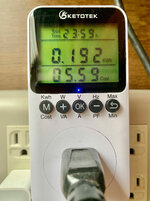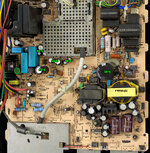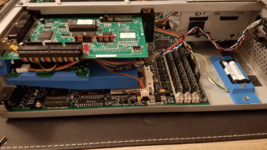I have finished my PowerKey-ON temperature measurements (CRT ON, HDD spinning, booted to Finder doing nothing).
My watt meter shows
68W (0.94A@104VAC) with the CC in the booted state. I am using Japan's 100V 60Hz power. Also note that I have a spinning hard drive installed, a IIe Card installed, and a 50MHz full FPU 040 on the motherboard too. There is also a little 40mm fan on the motherboard, powered by 12V. On top of all that, I have the regular VGA mod installed. So my setup probably draws more power than the average Color Classic.
Interestingly,
DL21 & DL22, which are the hottest components in the shutdown state, dropped 12°C in the booted state to about 83°C, down from 95°C.
I did not find substantial temperature differences on the other components mentioned in my previous post, except for the capacitors, which get hotter. Specifically, the caps which are 50°C to 55°C in the shutdown state, rise to 70°C or slightly above in the booted state. There's nothing that can be done about that. It's just something to note because the hotter electrolytic caps, the shorter their life.
In the shutdown state RP12 (thermistor/degausser) is the second hottest component at 91°C. While that temperature remains the same in the booted state,
RP1 (round thermistor marked "PH NTC 100"), which is off in the shutdown state, heats to
100°C in the booted state. Not something we need to worry about, but just FYI.
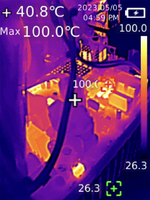
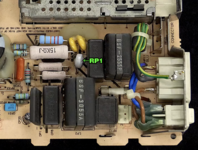
As
@YMK discovered earlier in this thread,
RL22 which isn't powered in the Shutdown state,
becomes the single hottest component on the Analog Board with the machine booted. My measurement of
170°C is pretty much what YMK measured with his thermal camera. Note that I set the Gain to LOW because my UTi260B has two ranges. Anything being measured which is hotter than 150°C should be measured with the 260B in LOW GAIN, and that is what was used when I made the capture below.
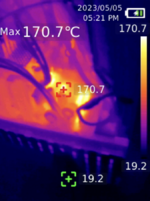
RL22 is one of the parts I purchased, and I will swap it out with a higher wattage part, while also stand it up on its legs for better cooling.
Bear in mind that all my measurements to date have been done with
the case back removed, which means there is no air flow from the fan. In the shutdown state, the component temperatures are likely a bit higher that what I measured because the case back is normally on, and of course the machine is shutdown so there is not case fan running. Not sure how much difference there is in the booted state with fan running versus the case back being off. Maybe its a wash, or maybe the board is slightly cooler with the case off.
I will need to continue that project next week.

By the way, I found
this PARTS LIST for the Color Classic ANALOG BOARD, but it's just a poor copy of the one
@YMK attached to his opening post.
EDIT: On July 25, 2025, I converted YMK's opening post attachment to this Google Sheets document which anyone can freely edit/update.
Anyway...
Thanks again to YMK for having alerted everyone to this. Just as the Macintosh 128/512/Plus Analog Board was enhanced with better parts recommended by Larry Pina, we now have a list of parts to slightly improve the Analog Board of the Color Classic.

